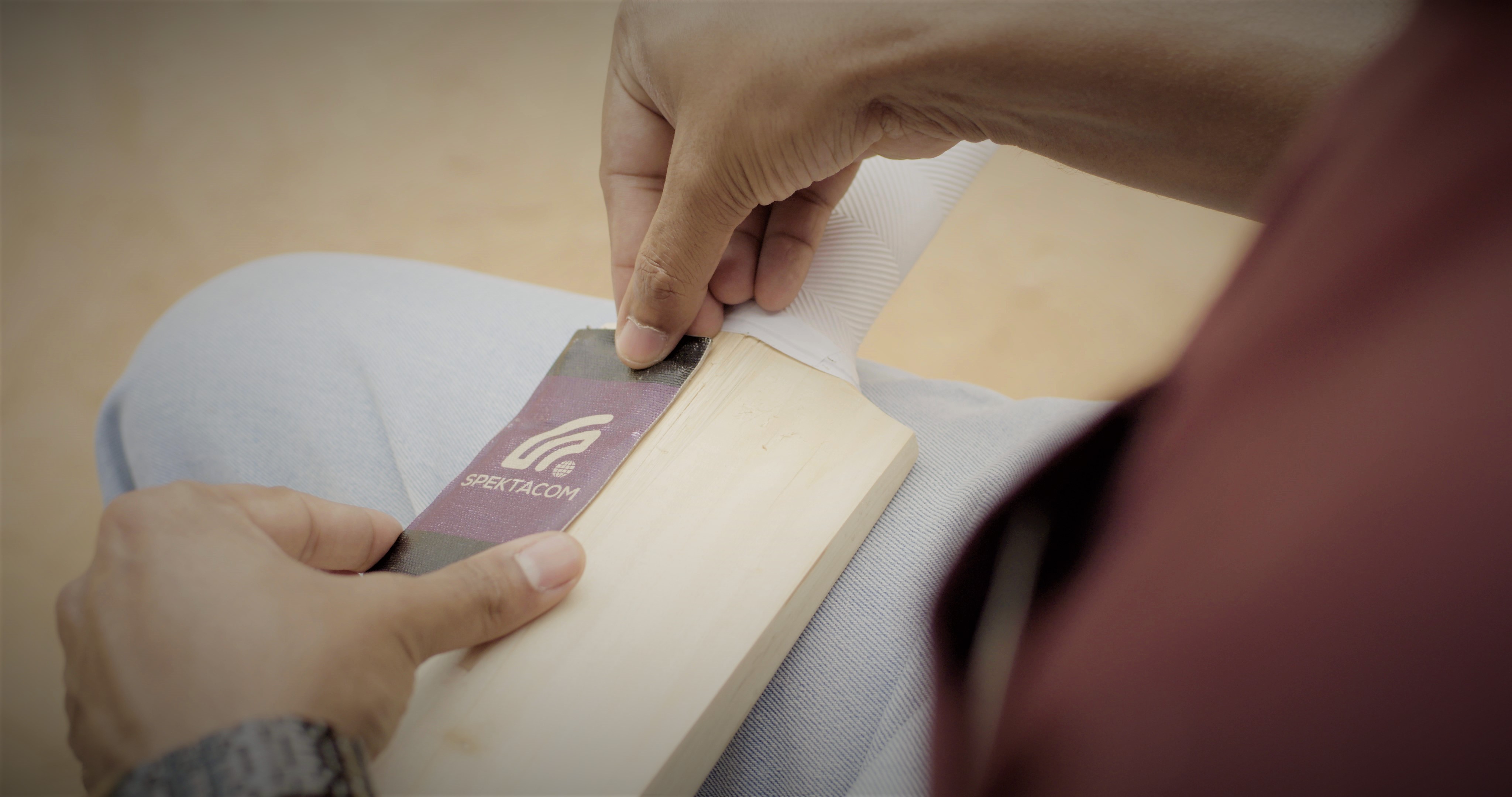
The Age for Smart Cricket Bats
THE BAT
Law 5.71 & 5.7.2: The bat should not be more than 38 inches / 96.52 cm in length; 4.25 inches / 10.8 cm in width; 2.64 inches / 6.7 cm in depth; 1.56 inches / 4.0 cm at the edges
(Source: MCC Law 5)
Cricket, similar to the English language, is the Lingua Franca equivalent of sports in India. It is very hard to cross a town without noticing a cricket match played by kids on the streets. While cricket balls in local tournaments vary largely from soft tennis balls to leather balls, depending on where & who plays the game, the material aspect of Cricket bat largely remained as wood and has been consistent in the last 3 decades – except in a few rural locations, coconut tree branches are at times used as alternates to wooden bats.
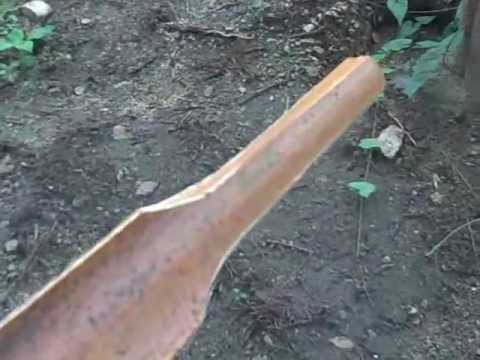
Cricket, unlike many other sports, is governed by Laws (not mere rules!) of the game. These laws, controlled by a private club called Marylebone Cricket Club (MCC) in London, had been codified and existed since 1700s. While there are 42 laws of Cricket that exist today, law 5 defines the precise specifications of the bat, including the material, purpose, measurement, and the grading to be considered while designing and using a Cricket bat.
The idea of codifying the specifications of the cricket bat largely stemmed from the need for preserving the spirit of the game – to allow a fair play between the opposing teams. Despite the restrictions on the material and the physical dimension of the bat, the story of Cricket bat has been filled with plenty of adaptation to the evolving needs and with no dirt of innovation spirit.
Trivia: The law for the bat dimensions came into existence after the year 1771, when a batsman playing in the local English tournament came to the pitch with a bat that was wide enough to cover all the stumps.
Cricket bat design:
The oldest Cricket bat that is on display at the Oval in London traces back to 1729, and has very close resemblance to that of a hockey stick. It is believed that the games were first played amongst the Shepherds community in England and hence the initial bats could have actually taken its form from the Shepherd’s crook. The bowling was understood to be underarm and the ball was rolled along the ground and hence the design proved sufficient to play the ball close to the ground.
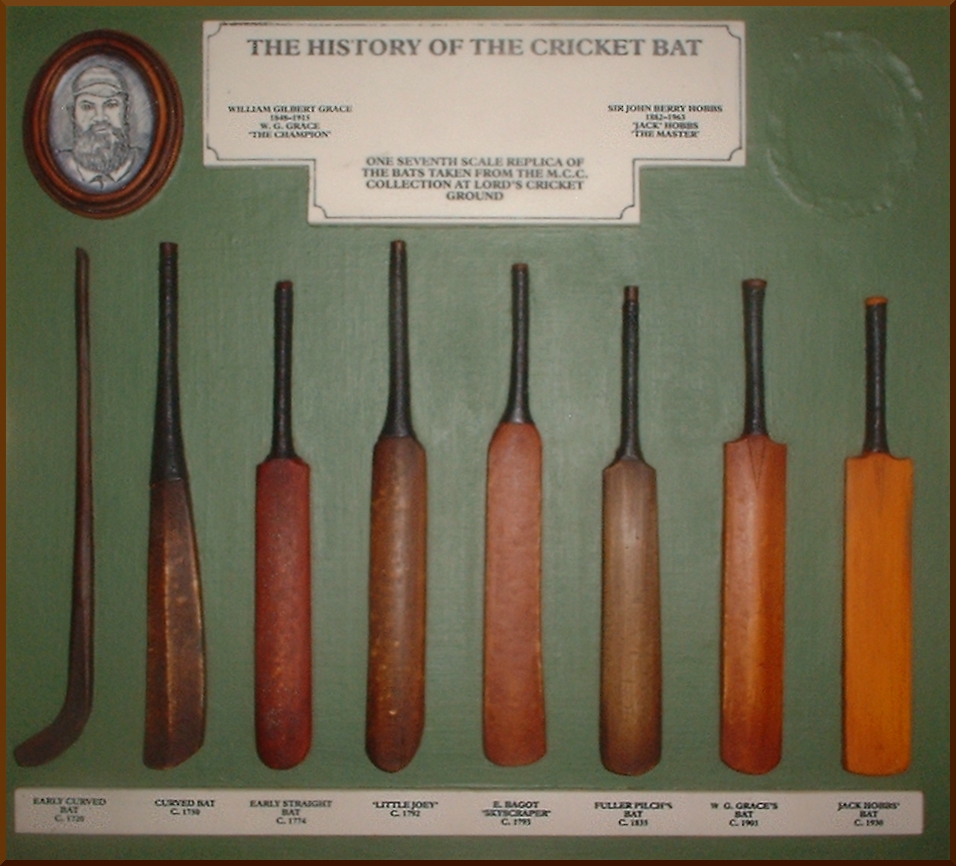
When the bowling moved from underarm rolling to looping the ball in the air and allowing it to bounce on the pitch, the bat blades started getting wider at the bottom to accommodate the bounce.
When the game moved to more roundarm bowling in the early 1800s, the bats started evolving with broader blades, higher swell, and lighter weights to allow more freedom in the movement and to react quickly to the speed and bounce of the ball. The batting techniques also evolved from horizontal sweeping of the ball on the pitch to playing the ball upright with wider shoulders.
Cricket willow:
Cricket bats were traditionally made from English willow woods, as they were considered to be lighter, tougher, and more shock resistant to ball impact. The earlier bats were made from the heartwood of the English willow and comparatively weighed a lot heavier than the modern-day bats. In the late 19th century, the manufacturers started to use the sapwood of the English willow to design lighter bats for better manoeuvrability in shot making. The modern cricket bats by international players typically weigh between 1.1 to 1.4 kgs.
Trivia: While the seeking for lighter yet powerful bat continues, Sachin Tendulkar used to play with a bat that weighed 1.47 kgs. Some of the other players in the recent past who likes to play with heavier bats include David Warner (~1.24 kgs), MS Dhoni (~1.27 kgs), Virender Sehwag (~1.35 kgs), and Chris Gayle (~1.36 kgs).
Single piece to two pieces: To avoid breakages and to have better weight & shock distribution, the bats were restructured from a single piece willow design to allow bat handles as a separate splice into the bat blade.
Today, majority of cricket bats are typically made from 2 types of willow wood: English willow and Kashmir willow. The handle, usually designed as rounded or oval, is made up of materials like cane, wood, or twine, and integrated with a tiny portion of rubber “springs” to reduce the vibration on the bat handle.
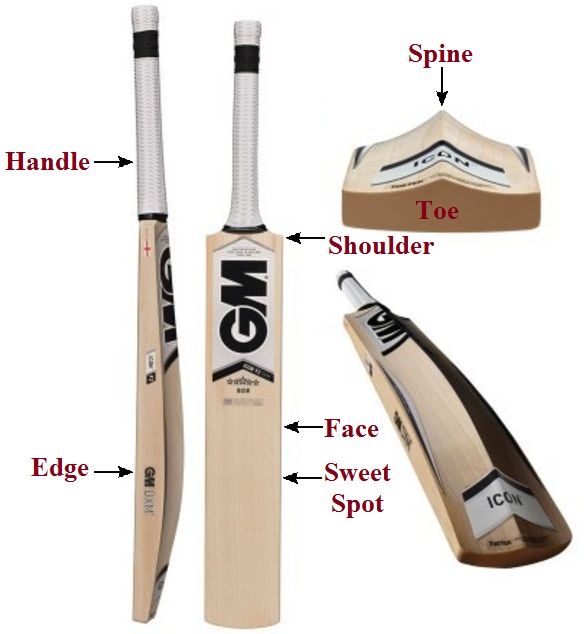
Tweaks & innovations in the bat design:
A few tweaks and innovations in the bat design were experimented since the second half of 1900s. Some of it created extensive debates in the cricketing community, a few just made noise, and while others found its way to reality. The below are some of the significant experiments tried on the bat design.
Bat material:
Aluminum bats: In 1979, Dennis Lillee used a bat which was made from aluminum for a test match against England at the WACA ground. The England captain complained about the impact of the bat on the ball and the incident prompted a widespread discussion in the cricketing committee on the usage of non-wooden bats. Subsequently, the laws of cricket were amended with the statement that bat blade should be made only from wood.
Graphite bats: Kookaburra introduced a carbon-fiber reinforced polymer on the spine of the bat in 2005 to enhance the bat’s longevity. The bat was used by a few international players, including Ricky Ponting, before it was revoked on request from the ICC and MCC.
Bat blade:
Shoulderless bats: Slazenger introduced the concept of shoulderless blades in 1960s for lighter pick-up and better weight redistribution to the sweet spot.
Mongoose bat: Mongoose MMi3 bats have short blades and long handles. It was primarily designed for more six hitting, and less for defensive shots, in the T20 format. Mathew Hayden used the bat in the 2010 IPL season. The bat is lighter than a conventional bat with 3 times more wood at the bottom of the bat, expected to enhance the sweet spot by 120%.
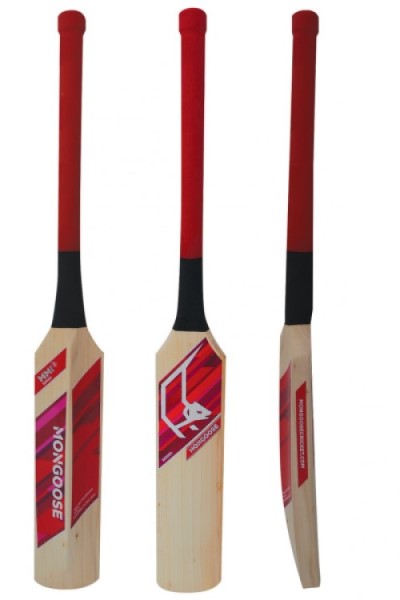
Scoop bat: Gary Nicolls introduced the concept of "Super Scoop" bat, which involved scooping of a portion of the wood from the backside of the bat and allocating more wood on the edges. It helped in bats becoming lighter and increased the ‘Sweet Spot’ region on the bat.
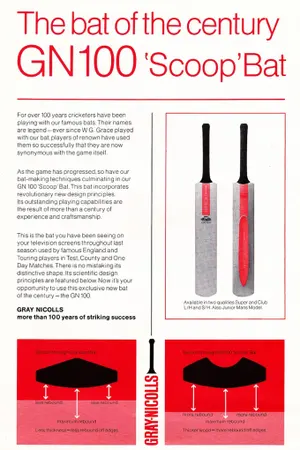
Camel bat: Rashid Khan, Afghanistan player, used a double hump bat during the big bash league in 2019 – famously quoted as “The Camel” by Cricket Australia.
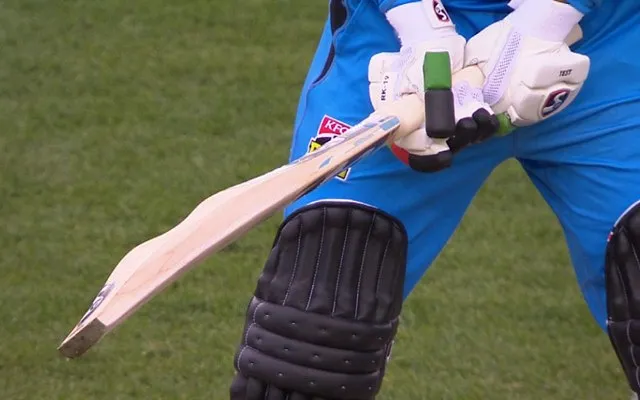
Making the Cricket bat smarter:
In the digital age, it is possible to understand the data behind every shot played on the cricket bat. This data can then be then analyzed to understand the nuances that would be required for effective shot making against different bowlers and bowling conditions. Spektacom’s PowerBat technology involves a smart sensor sticker that can be glued on the backside of any normal cricket bat. It helps the batsman to understand and analyze the metrics that powers a proper cricketing shot, including bat speed, twist on the bat, ball impact location on the bat, and power generated on the shot.
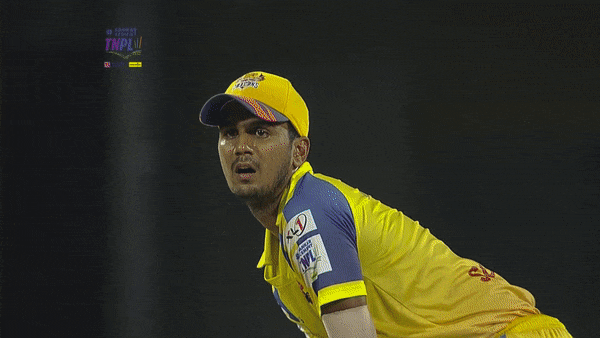
References:
- https://en.wikipedia.org/wiki/Cricket_bat
- https://www.cricketdirect.co.uk/Additional-Departments/Essential-Guides/Cricket-Bat-History
- https://www.lords.org/mcc/the-laws-of-cricket
- https://cricketmost.weebly.com/history-of-cricket-bats.html
- https://www.espncricinfo.com/story/_/id/23018554
- https://cricshots.com/5-heaviest-bats-cricketers/
- https://indianexpress.com/article/explained/explained-what-came-before-rashid-khans-camel-bat-mongoose-kaboom-aluminium-6193514/
- https://www.timesnownews.com/sports/article/what-is-mongoose-bat-and-why-did-its-use-fade-away/589751


Comments